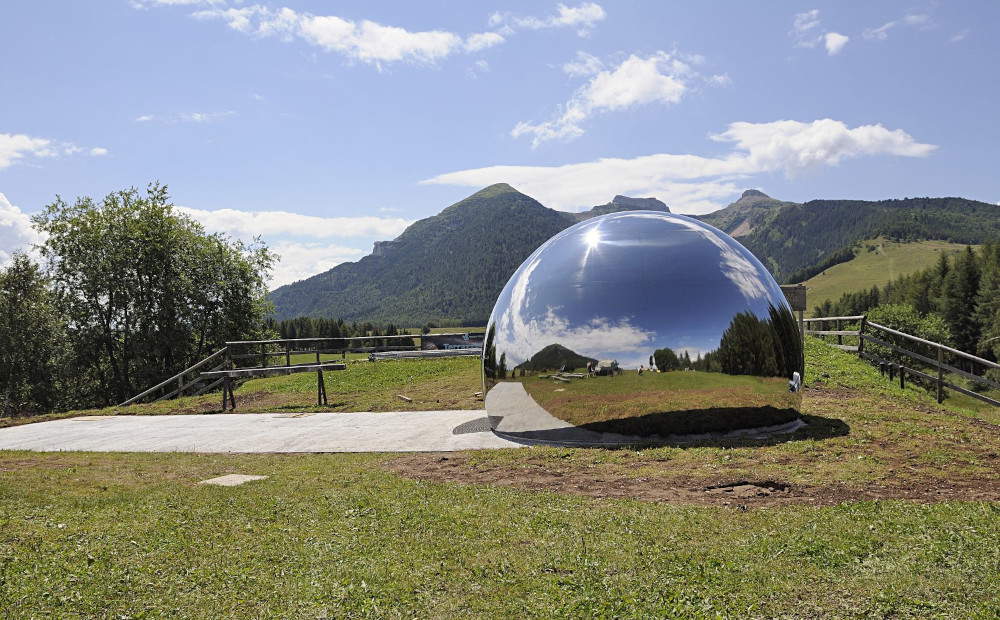Terrace of Stars on Bondone Mountain is UNESCO site connected to the sky
The Terrace of Stars, about 1,500 meters above sea level on Mount Bondone, enters the UNESCO world register of"sky-related sites." It is a place that lends itself tosky observation thanks to its limited light pollution, clear and smog-free air. Here, every year since 2001, MUSE - Trento Science Museum has offered astronomical observing experiences to thousands of people.
“The importance of this recognition,” explain MUSE director Michele Lanzinger and Christian Lavarian, cultural mediator of MUSE’s Public Programs Office (Astronomy Area) and head of the Terrace of Stars, “rewards the work and passion dedicated to astronomical activities, and more, carried out at MUSE’s territorial headquarters over all these years thanks to the collaboration of many local entities: the Municipality of Trento, the APT, the Trento and Sopramonte Forestry Company, the Proloco of Monte Bondone, the Gallo Cedrone association, the Bonporti Conservatory of Trento, the Trento astrophilic association and many others. Monte Bondone has always been a privileged place for stargazing: many people who are passionate about astronomy and nature have traveled its roads over the years to get to the Viote plain, place their telescopes and admire the celestial vault.”
“Trento is a city that ’looks up’ not only to admire the verticality of its towers or the precious paintings that the 16th century has handed down to us among the streets of the historic center. Trento also ’lifts its gaze’ to contemplate the mystery of the firmament and the immensity of the celestial vault, which thanks to the instruments made available by the astronomical observatory can be known, studied and admired by researchers, enthusiasts or tourists,” said Councillor for Culture and Tourism Elisabetta Bozzarelli. “Inclusion in the Unesco World Register of ’sky-connected sites’ is a recognition of great value for our city, an urban alpine capital that with its 2,000-meter drop has in its territory a location, Mount Bondone, unspoiled and with great naturalistic value. If Trento obtains these important recognitions, it is thanks to MUSE, which, with scientific competence and preparation of its researchers and collaborators, today places a new piece not only among the recognitions but above all in new possibilities for development and research.”
In the late 1990s, the idea was born in Trent to share nighttime moments in the high mountains with a wider audience by creating a calendar of activities dedicated to celestial observation. A suitable place for the stationing of telescopes was soon identified: an old concrete casemate, nestled in the basin of the Viote di Monte Bondone, which, in some places, was more than a meter and a half thick, with a width of 20 meters and a length of 13 meters. The building was used in the past for military shooting exercises that employed a number of small cannons placed inside the structure and a Sherman tank positioned at the west entrance of the building to hit moving silhouettes fixed on trolleys pulled by a small tractor that moved on the railroad built at the base of the Val d’Eva, at the foot of the Three Peaks of Monte Bondone. Having become the peripheral headquarters of the then Museo Tridentino di Scienze Naturali, over the years the observatory was enriched with instruments and activities until it took on its present appearance in 2010.
Today a large polished steel dome creates a mirror effect on which the panorama is reflected by day and by night, as a metaphor for the relationship between heaven and earth.Light pollution is limited on Mount Bondone, and the entire area is protected by a regional light pollution law. The result is a dark and clear high-mountain sky, which makes it possible to use so powerful telescopes (the main one is a Newtonian reflector with a diameter of 80 centimeters) to observe in depth the wonders of the firmament: constellations and planets, the Milky Way, colored double stars and clusters, nebulae, galaxies. Special cameras attached to telescopes show the most evanescent features of these objects with very high resolution, which can escape even close observation. During the day, with special instruments and filters, the face of the Sun can be observed in complete safety. The observatory is nestled in the Viote basin on Mount Bondone, anaturalistic oasis for those who love mountains, outdoor activities and slow tourism, with a low ecological footprint and accessible to all. During the summer season, the Terrace of Stars comes alive with astronomical observations, both day and night, concerts, events and shows, and activities for children. A short walk from the Terrace of Stars is the Alpine Botanical Garden, another historic section of the MUSE, dedicated to high-altitude flora and biodiversity: together they offer a range of high-level cultural activities on the mountains of Trent.
For summer 2023 activities, all dates and times can be found at www.muse.it
Photo: MUSE
 |
| Terrace of Stars on Bondone Mountain is UNESCO site connected to the sky |
Warning: the translation into English of the original Italian article was created using automatic tools. We undertake to review all articles, but we do not guarantee the total absence of inaccuracies in the translation due to the program. You can find the original by clicking on the ITA button. If you find any mistake,please contact us.



























